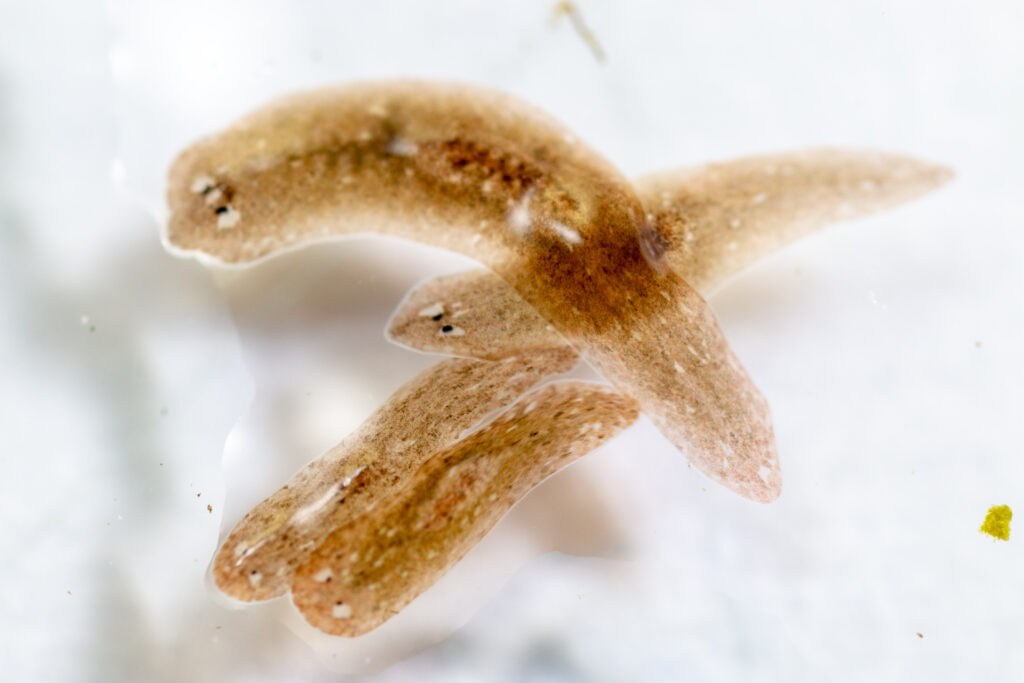Healing tips from worms
How injury can trigger responses in distant tissues

The planarian has a neat trick: If it loses its head, it’ll grow a new one. Of course, it’s a flatworm, so practicing the trick yourself is discouraged. Still, understanding how the worm does it could lead to medical advances, such as new cancer treatments and ways to regenerate tissue after injury.
Bo Wang, PhD, assistant professor of bioengineering, was intrigued by the fact that in planarians and many other animals, including mice, zebrafish and axolotls, wounds in one part of the body trigger responses in distant tissues.
“But whether or not those responses actually have any function has been unclear,” said Wang, lead author of a study published in July 2023 in the journal Cell.
He and his team wanted to understand how these responses coordinate, so they conducted a series of experiments in planarians. Cells in animals from worms to humans use a chain of proteins called the extracellular signal-related kinase, or ERK, pathway to communicate with each other. If tissue is injured, the nearest cells pass along that information to neighboring cells, which then tell their neighbors, and so on, leading to a signal wave propagating in the animal’s body.
To find out whether cells far from an injury engage in the healing process through this pathway, Yuhang Fan, a graduate student in the Wang lab, blocked ERK signals from spreading in a planarian. Then he cut off its head.
Normally, a flatworm’s head quickly regrows after removal. But in this case, the head never regrew. Then, Fan removed a planarian’s head and its tail. Surprisingly, both regrew. Taken together, these findings indicate regeneration required wound responses in tissues throughout the animal’s body.
“This implies there’s kind of a global body voting system that says, ‘OK, now we should grow something,’ and everybody has to agree within a short time after injury,” Wang said. And even the cells furthest away get a vote.
As the researchers tracked ERK-signaling waves spreading throughout planarians’ bodies, they noted that hundreds of genes were turned on and off. Although quite distantly related to planarians, humans share many of those genes.
“This really gives us an entryway to go after those genes,” Wang said. “It could allow us to figure out how animals regenerate while managing the risk of uncontrolled cancerous growth.”
